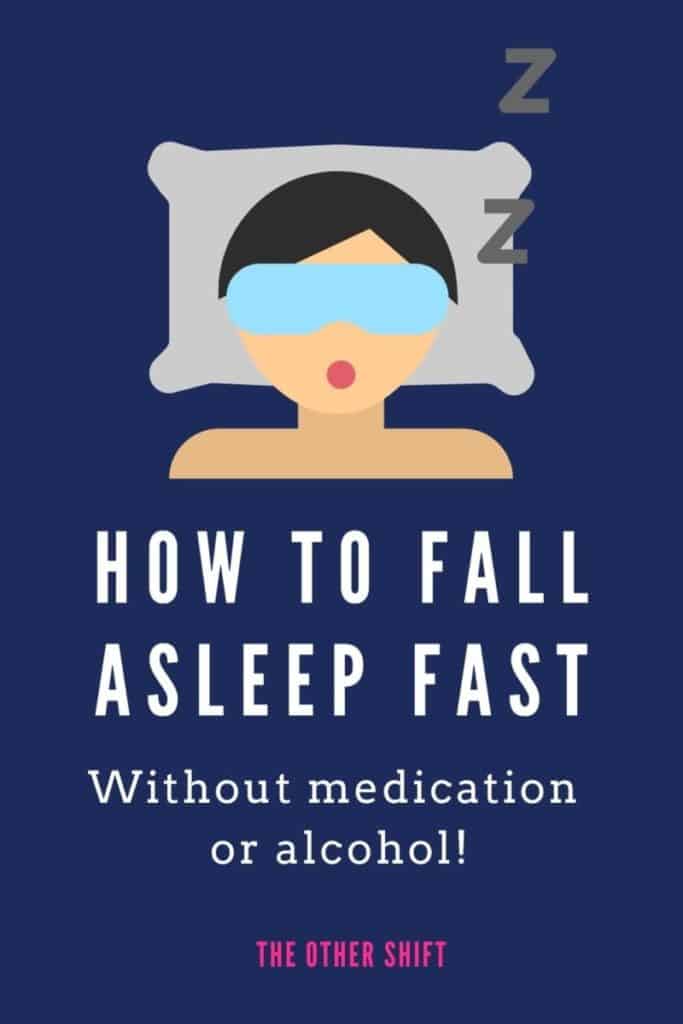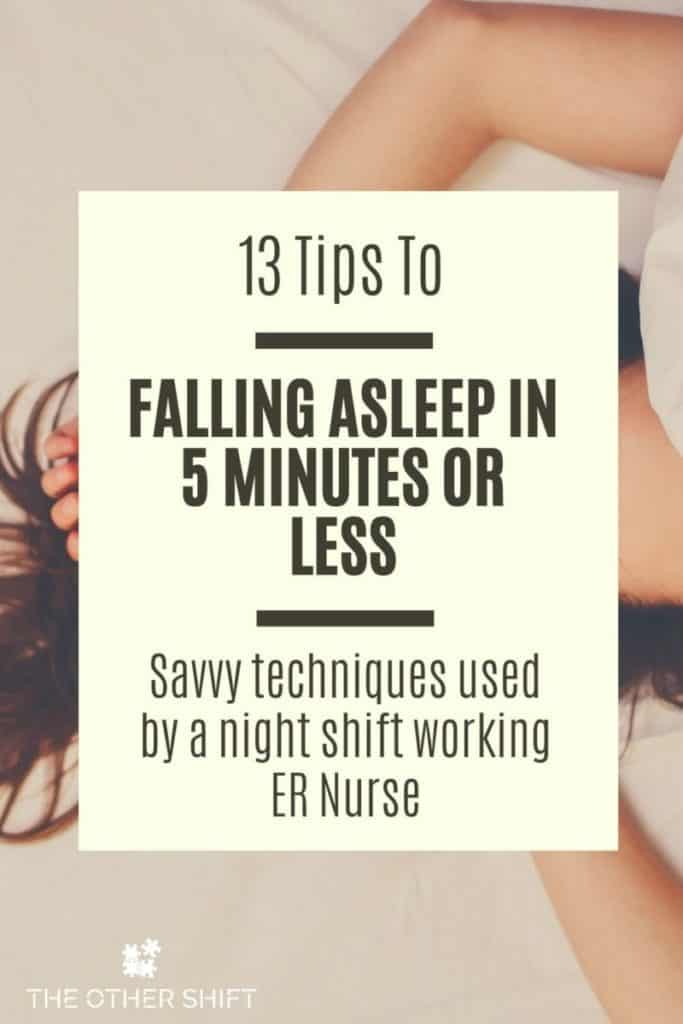Disclosure: This page may contain affiliate links, meaning we receive a commission if you decide to make a purchase through our links, but this is at no additional cost to you. Please read our disclosure and privacy statement for more info.
How long do you spend trying to fall asleep? Are you able to quickly turn off all your thoughts and fall into a calm, relaxed state in under 5 minutes? Or does it take you hours to wind down to stop your brain from churning through tomorrow’s to-do list?
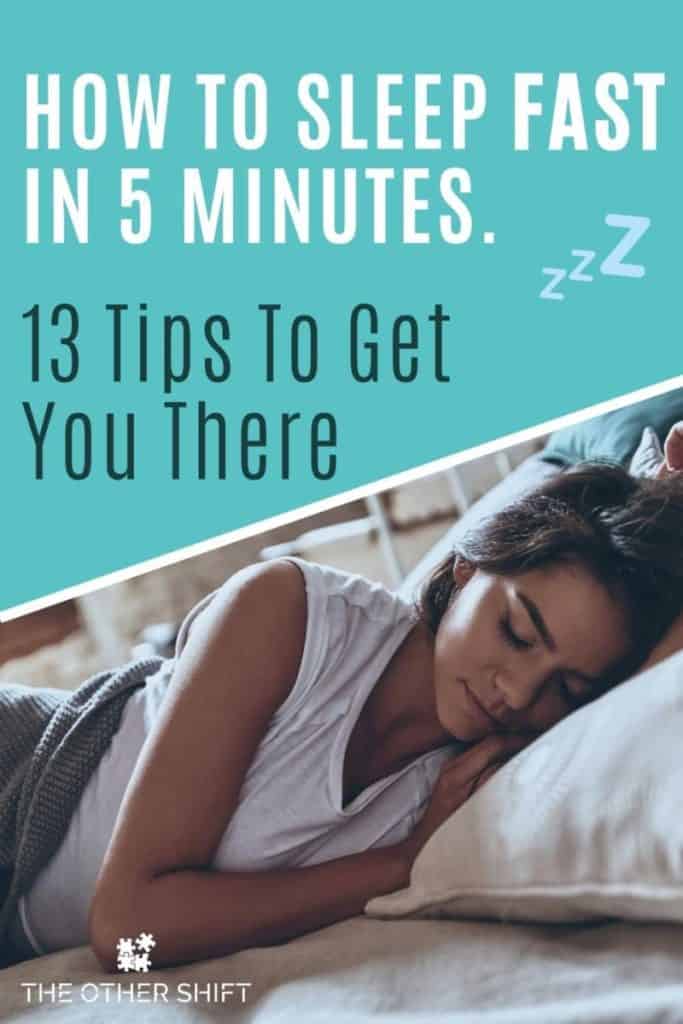
Don’t you wish you could fall asleep fast in under 5 minutes? Staring blankly at the ceiling for hours or frustratingly rolling around in bed has to stop. Enjoy this post as we explore 13 sleeping tips to help you find your happy place.
1. Block out the Light With Blue Light Blocking Glasses
Who winds down after a busy day by scrolling their phone, looking at their laptop computer, watching the next episode of a Netflix series or even reading their book in bed?
Most people, right? While there is nothing wrong with some mindless TV and social media scrolling, the issue stems from the light which is coming not only from these devices but also from our bedside lamps.
This light is called blue light , a high-energy visible light with the shortest wavelengths. Due to its high energy, researchers
, a high-energy visible light with the shortest wavelengths. Due to its high energy, researchers have suggested that blue light may increase our risk of macular degeneration, digital eye strain and even lower the secretion of melatonin, our precious sleep hormone. (source
have suggested that blue light may increase our risk of macular degeneration, digital eye strain and even lower the secretion of melatonin, our precious sleep hormone. (source )
)
Just think about that. You’re scrolling on your phone in bed and finally, you start to yawn realizing it’s time for sleep. You turn off your light and expect to sleep in under 5 minutes, right? Well, it’s unlikely going to happen as your sleep hormone has had no time to prepare.
Even with this knowledge about the dangers of blue light before bed, it’s unlikely our habits are going to change in a hurry. A quick and simple solution I’ve found is sliding on a pair of blue light blocking glasses and it’s been the answer I craved.
We have tried an abundance of these types of glasses but there was always something not quite right. From the weight, their ability to actually work, durability and comfort. We finally found a pair we love and there called ‘Swannies ‘ from Swanwick Sleep.
‘ from Swanwick Sleep.
Here is what they look like.

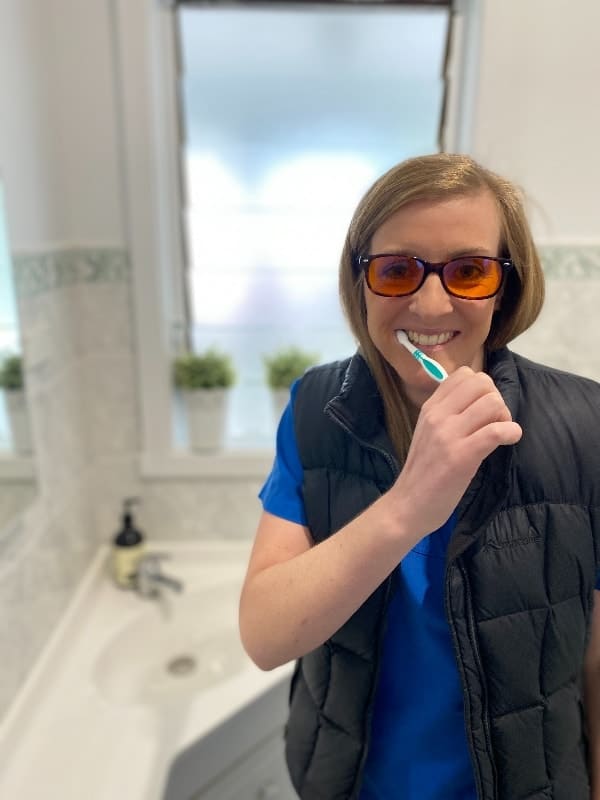
Swannies block out 99% of the blue light which far exceeds any other blue light blocking glasses we could find on Amazon and others we have tried. Though the orange color does look a little odd, that’s the part that is actually blocking out the blue light.
You’ll see other brands in the market which appear almost clear. Though they look great, they probably only block 30-40% of the blue light and are actually better suited as computer glasses and not specifically to be used before bed.
Dan and I simply slide our “Swannies” on about 90 minutes before we plan to sleep (regardless of what shift we’re on) and the effects are incredible.
We fall to sleep quicker, stay asleep all night and don’t wake up feeling groggy!
We highly recommend checking out the Swanwick Sleep website here and getting your very own pair of Swannies!
and getting your very own pair of Swannies!
Or have a read of our shift work tools page here for more information and some great videos explaining what blue light blockers do in more detail.
Though exposure to blue light sounds bad, it’s actually really important during the day to help regulate our circadian rhythm, better known as our body clock. If you want to learn more about blue light, click here to view another post we wrote which explains why not all blue light is bad.
2. Turn Off / Close Your Screen
Though we just spoke about blocking out the blue light by wearing a pair of fancy (but not too expensive) glasses, we know some of you just won’t do it. You don’t want to wear glasses while watching TV and you certainly don’t want to wear them brushing your teeth. I get it.
As another solution, can you have some time away from your phone, laptop computer and even the TV by reading, doing a puzzle or stretching before bed? Though the light will probably still be effecting melatonin production, consider using a candle or the use of a “blue light friendly” type book light you could clip on the back of chair? I have one similar to this one I found on Amazon and use it every night.
and use it every night.
Though ‘night shift mode‘ found on most modern devices may help increase the production of melatonin and be a little kinder to your eyes, shutting down your device or wearing a pair of blue light blocking glasses I mentioned earlier is probably a better alternative.
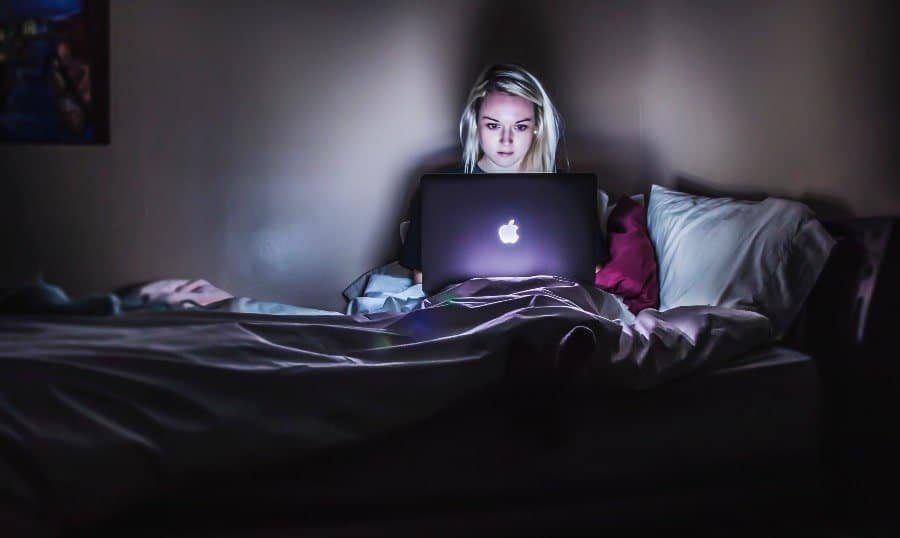
3. Get the Temperature Right
Adjust the thermostat in your bedroom to 60–75°F (15–23°C).
Your body temperature naturally drops overnight (becoming it’s coldest at 4 am) so it’s best to provide what your body wants, even though it may be uncomfortable in the beginning. (I overcome this horrible cold for a few minutes by using a heat pack or hot water bottle)
If it’s too hot, try leaving a window open, using a fan or even a portable air conditioner like this reasonably priced one on Amazon  to reach this desired temperature.
to reach this desired temperature.
If it’s too hot, you’re fighting your body’s natural rhythm making it more difficult for your body to relax and prepare for sleep. Also, if it’s too hot you may find you’ll fidget and be more restless and may experience very vivid dreams causing you to wake in the middle of the night.
Though electric blankets may seem really nice, just be cautious as they could be keeping you awake.
Related post: 9 Shift Work Best Practices You’re Probably Not Doing
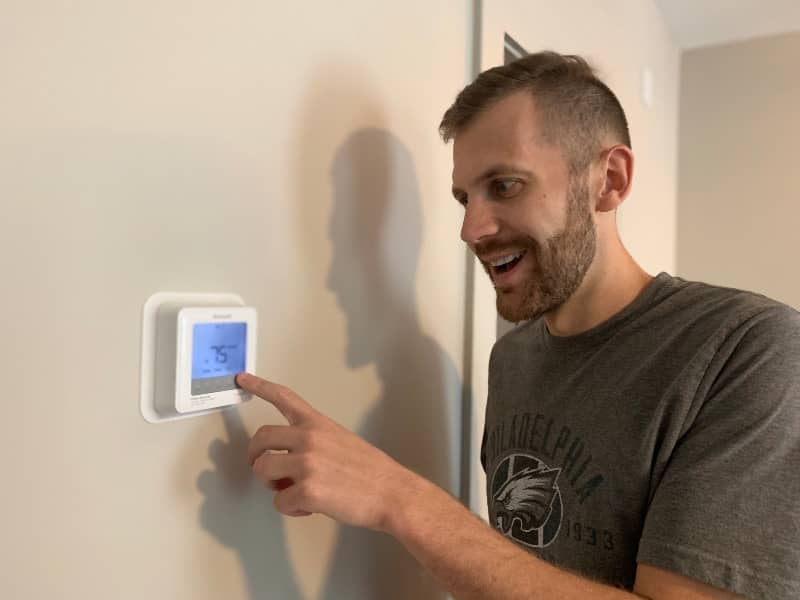
4. Drink Sleep Inducing Tea
Us shift workers love caffeine! Chocolate, soda, coffee, you name it. It is our go-to pick-me-up.
But instead of gulping down a large mocha latte with whipped cream from Starbucks on your way home from a shift, making the switch to decaf or better yet to sleep tea could be exactly what your body needs.
The caffeine signals to your brain it’s time to party and sleeping will be a distant memory – unless you’re planning a coffee nap which is an interesting concept embraced by some shift workers.
Adding sleep tea to your bedtime routine allows for your mind and body to start relaxing.
I use a variety of different teas on an average day. Black tea in the morning, peppermint tea after meals, herbal teas throughout the day like lemon and ginger then a sleepy type tea at night. This night time tea is generally caffeine-free so I’m not needing to use the bathroom all night and often contain ingredients thought to make us sleepy and relaxed such as chamomile, lavender and vanilla.
I have a few favorite sleep teas which you can find on Amazon but this is by far my favorite.
As a close second, “Sleep Tight” from T2 does a marvelous job. Suss it out on Amazon here .
.
For all my other tea needs during the day, I turn to either ‘Melbourne Breakfast Loose Leaf Black Tea ‘ from T2, Orange Pekoe
‘ from T2, Orange Pekoe or simply English Breakfast with a dash of milk. My peppermint tea of choice is Twinings of London Pure Peppermint Herbal Tea Bags
or simply English Breakfast with a dash of milk. My peppermint tea of choice is Twinings of London Pure Peppermint Herbal Tea Bags .
.
5. Control Your Breathing
For so long I ignored this method of falling to sleep because I thought it would never work.
But since I started to actually pay attention and show some self-love, the effects of slow, relaxed breathing are incredible and well worth adopting.
Here are two different breathing techniques to help you fall to sleep. Both using a slightly different method so I recommend giving the two of them a go.
Breathing Option #1
Once in bed, count back from 100 – 1, taking two deep, slow breathes between each number. 100 – breath – breath – 99 – breath – breath – 98. etc. I rarely make it past 85!
This method keeps you focused on what number you’re up to and stops your brain from racing.
Breathing Option #2
The second breathing option is to count while exhaling
- Begin by counting “one” to yourself as you breath out
- The next time you exhale, count “two,” and so on up to “five”
- Then begin a new cycle, counting “one” on the next exhalation
Never go beyond “five”. You will know your mind is beginning to wonder when your counting “nine”, “ten.”
Breathing Option #3
Similar to option 1, I stole this idea from the navy seals.
- Expel all of the air from your lungs
- Keep them empty for four seconds
- Inhale through your nose for four seconds
- Hold for a four-count (don’t clamp down or create pressure; be easy)
- Exhale for a four-count
- Repeat for 10-20 minutes
6. Meditate
It may seem strange at first to simply sit in one place and do nothing, but it’s a very natural thing that’s been going on for centuries!
The 4-7-8 method is a brilliant way to start slowly introducing meditation to your life. It takes a little while to get used to, as it’s a bit different from others mentioned above, but it works a treat!
If you’re feeling a little wired’ from the events on your shift, try this simple, yet powerful tool. It will help relax your nervous system and promote calmness and relaxation.
Here’s what to do:
- First, place the tip of your tongue behind your upper front teeth.
- Exhale completely through your mouth and make a whoosh sound. (This part gets a laugh from Dan every time!)
- Close your mouth and inhale through your nose while mentally counting to four.
- Hold your breath and mentally count to seven.
- Open your mouth and exhale completely, making a whoosh sound and mentally counting to eight.
- Repeat this cycle at least three more times.
[VIDEO] – Here is the 4-7-8 method in video form. It can work beautifully if give it time.
7. Write Down What’s Stressing You Out
If you’re lying in bed and you can’t stop thinking about your day or what you need to do tomorrow, write it down. Make it tomorrows problem.
Most of the time the issues are not urgent and can be solved or at least attended to the next day.
Once it’s on the paper, the worry of remembering it has vanished.
Just don’t use your phone’s light for this as the blue light will wake up those sleep hormones again.
People often say, just ‘stop thinking about it’ when giving sleeping advice. But that doesn’t work for me. Writing down my worries and concerns works a treat when trying to fall asleep quickly.
Related post: Being a New Nurse is Hard. How to Stop Feeling Incompetent
8. Use Lavender and Aromatherapy
Lavender is more than a pretty flower! It’s a powerful essential oil that has shown to improve symptoms of PTSD, support brain function, reduce stress and help us sleep.
While you’re wandering around the house, agitated and wanting to fall asleep quickly even when you’re not tired, use lavender.
This lavender oil pictured is very popular on Amazon and well worth a sniff.
and well worth a sniff.
When I started using lavender oil I was confused at where exactly I should put it. On my pillow? Through a diffuser? Here are is a list of places you can place essential oils to help you relax, wind down and sleep. (source )
)
- Spritz your pillows at bedtime
- Dab a drop or two of essential oil on your neck, temples and wrists before bedtime
- Sprinkle a few drops on a piece of tissue and tuck it under your pillow.
- Use a diffuser that sprays a fine mist of water and essential oil into the air as you sleep
- Add a few drops into the bath using lavender Epsom bath salts.

- Smooth a lavender-scented body lotion into your skin before you hit the sheets
- Apply a couple drops of lavender oil on the collar of your pajamas
9. Listen
Have you tried getting into bed wearing your cozy pajamas (or whatever that looks like for you) turning off all the lights, closing your eyes and listening? Listening to soft music, often called binaural beats, can be incredibly powerful in helping us fall to sleep even when we’re not tired.
It has a direct effect on the parasympathetic nervous system, which helps your body relax and prepare for sleep. It can even be used to improve chronic sleep disorders like insomnia!
We recently published a post about the most relaxing tunes to help you sleep. It has a bunch of video and playlist examples for you to try out. See our sleep music post here.
If you’re not into music or would prefer something different, have you considered adult audio story books or even guided meditation?
Spotify have some great books and guided meditation you could try for free. You could even try an Audiable membership from Amazon . Click the image below to explore more. Try Audible and Get Two Free Audiobooks
. Click the image below to explore more. Try Audible and Get Two Free Audiobooks by clicking the link.
by clicking the link.
[VIDEO] – If guided meditation is totally new to you, this YouTube video is very helpful. Skip to about the 57 seconds mark to begin. Try to relax by concentrating on their voice and your breathing.
10. Read a Book
Ending the day with a book in my hands is much nicer and less distracting than my phone or computer.
You don’t need to be a fast reader or even be reading something particularly challenging. It’s refreshing to take some time away from the internet and social media even for 30 minutes.
Reading with either a specialized blue light blocking book light or better yet a pair of blue light blocking glasses ensures your sleep hormones are not negatively impacted by the light. (see pictured below)
ensures your sleep hormones are not negatively impacted by the light. (see pictured below)
If hardcover books are too clunky, why not try reading a kindle? Amazon often has some pretty good deals in relation to kindles such as their Kindle Unlimited Membership Plans .
.


11. Put on Your Yoga Tights
Yoga has been proven to decrease stress and tension by encouraging the practice of calm and deep breathing patterns.
My personal favorite way to practice yoga on the cheap is streaming it via YouTube to my TV through my Fire TV Stick with Alexa Voice Remote. (Available via Amazon.com)
(Available via Amazon.com)
My go-to channel is ‘Yoga with Adrienne’ and it’s what I recommend. She’s beautifully calm, educational and easy to follow.
Here is a great relaxing video to help you wind down and feel tired before bed.
If you don’t experience negative effects with vigorous exercise shortly before bed, this could be the perfect solution to sleep as you’ll have tired yourself out.
Lastly, exercising during the day really helps me sleep at night. My muscles are sore and need rest. When I have a “lazy day” I find it’s harder to sleep at night.
12. Wear Socks
The first time I heard this I thought it was really weird.
But the theory here is, by heating your cold feet it tells the brain that it’s bedtime. In medical terms, it’s called “vasodilation”.
It may not be the sexiest sleeping strategy but it’s worth a try, especially when it’s scientifically proven research.
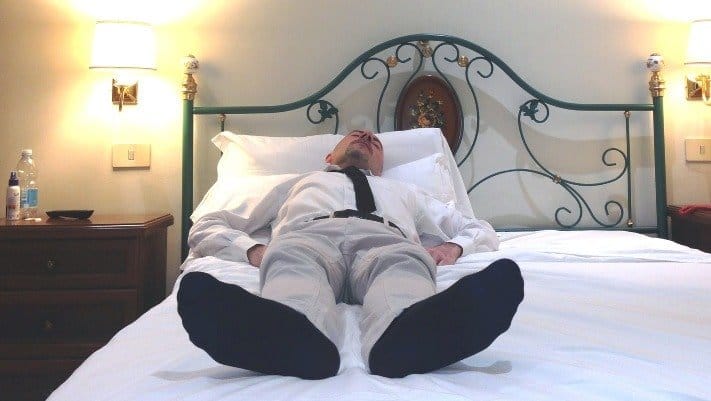
Related post: Can’t Sleep After Night Shift? 13 Weird Tips That Actually Work
13. Take Melatonin or Other Sleep Supplements
You can see from this extensive list that medications are NOT the only option to help you fall to sleep in 5 minutes.
In the small handful of times we have used Melatonin, we did fall to sleep, but often awoke feeling pretty terrible.
If you need to take Melatonin then go for it, but try all these solutions first.
Our tip here is if you still have 4+ hours of sleeping time before you need to get up, but you can’t sleep, then take it. Any less, resist. Otherwise, you’ll wake feeling lethargic and groggy.
Natrol Melatonin works well and is very popular on Amazon if you need to stick a spare bottle in the medicine cabinet. Just be aware, I personally only need either the 3mg or 5mg, not the 10mg. It’s too much for me.
If you are on the fence about Melatonin and other sleep aids – check out these two posts we wrote about shift working medications.
- Insomnia and Shift Work Sleep Disorder Medication Review
- My Top Tip for Taking Melatonin on Night Shift: Plus 10 More
Bonus: Stick to a Routine
Start to make sure that in the 1-2 hours before bed, most things looks the same. For example, the time you go to bed, having a bath, smelling lavender, listening to sleep music, stretching and / or reading a book.
We often discuss the importance of a sleep routine. Your body needs to know when it’s time to ‘wind down’ so it can start preparing your body and mind.
We are habitual creatures and creating a systematic routine will improve sleep.
For most shift workers, having a sleep routine can be almost impossible, especially those on a rotating roster.
But following the same routine before bed, regardless of the time of day will help. Show some self-love and give your brain the heads up that sleep is coming…
Related post: 8 Useful Hacks for Surviving Night Shift With No Sleep
Next…
- Night shift health: Is Night Shift Bad for You? 11 Truths Uncovered
- Burnout: Shift Work Burnout: Causes, Red Flags and How to Beat It
- Staying fit: How to Stay Fit While Working Nights: 12 Sneaky Tips
Summary: How To Sleep Fast In 5 Minutes. 13 Tips To Get You There
Falling to sleep in 5 minutes is totally possible even when you’re not tired
Discovering different strategies which help you fall asleep instantly, even if you’re still buzzing from work, is a buzz in itself.
We hope you found a few treasures throughout this article to help conquer your sleeping woes!
Leave me a comment below if you enjoyed this article on how to fall asleep when you’re not tired or have any questions!
Cheers,

Disclosure: This page may contain affiliate links, meaning we receive a commission if you decide to make a purchase through our links, but this is at no additional cost to you. Please read our disclosure and privacy statement for more info.




